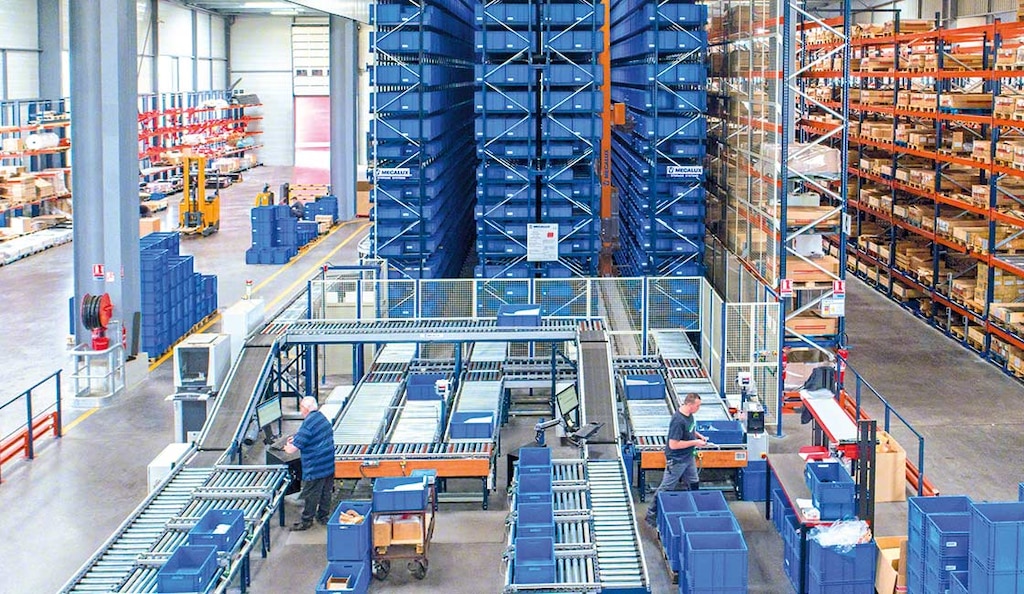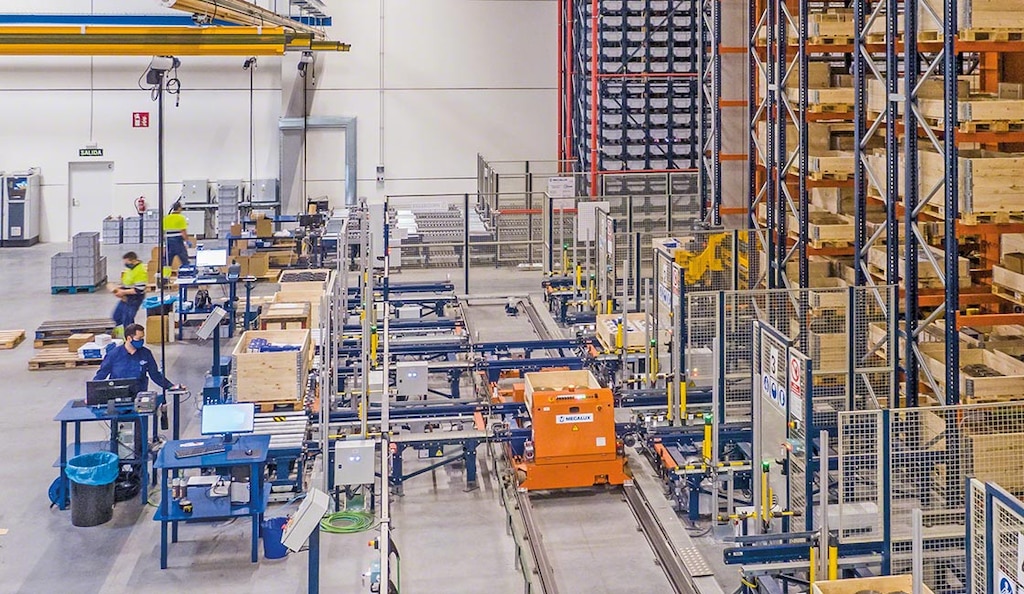
Data-driven companies: the digitalisation revolution and the power of data
The latest technological advances have fuelled the rise of data-driven companies. These are businesses that apply data analysis through digital technologies to know the status of processes, improve them and provide more efficient service.
Companies are continually modifying their manufacturing and logistics processes to meet new customer needs. Data analytics offers detailed information on operational performance and helps identify improvement opportunities.
What is a data-driven company?
A data-driven company is an organisation that makes strategic business decisions based on objective data, instead of relying solely on experience, intuition or subjective opinions.
The data-driven concept is not new. Companies always turn to data analysis to make better decisions. As British physicist and mathematician William Thomson, better known as Lord Kelvin, once said: “If you cannot measure it, you cannot improve it.” Data boosts business because by measuring every process, you can get a detailed map of the situation, facilitating improvements.
In recent decades, the emergence of new technologies such as big data and artificial intelligence (AI) has helped companies analyse their operations with greater accuracy. Data-driven organisations digitalise all their business procedures to gett the most out of their data. These types of companies gather, analyse and share information to facilitate collaboration between different departments. The technology research and consulting firm Gartner predicts that by 2025, 95% of current data-based decisions will be automated, at least partially.
Although data analysis is extremely useful in all industries, in the logistics sector it’s vital. Logistics generates a vast amount of data with enormous potential to create knowledge that helps improve the supply chain.

The importance of becoming a data-driven company
The management consultancy McKinsey contends that by 2025, “most employees will use data to optimise nearly every aspect of their work.” The rapid acceleration of technological advances and the power of data are causing more and more companies to become data-driven.
According to McKinsey, organisations that can move forward faster and make the most of data-backed capabilities will reap greater benefits. For example, companies that make effective use of data to improve throughput and efficiency are already obtaining 20% of their earnings before interest and taxes (EBIT) thanks to AI.
The automation and digitalisation of business — as a result of the expansion of Industry 4.0 — have generated a huge amount of data in manufacturing and logistics processes that have great potential.
According to a study by the Institute of Communication and Computer Systems (ICCS) of the Technical University of Athens, “The need to support data-driven decision-making in Industry 4.0 has leveraged the development of new methods and algorithms aiming to support engineers in making optimal decisions about maintenance and operational actions.
One of the advantages of the data-driven approach is transparency and a far more complete visibility of processes. Companies can use key performance indicators (KPIs) to monitor manufacturing and logistics processes in detail, anticipate certain situations and take proactive measures to improve efficiency. “Predictive maintenance in particular is gaining a crucial role in cost reduction and business performance improvement. Predictive maintenance utilizes heterogeneous data sources for detecting abnormal behaviors of equipment (diagnosis), predicting future failure modes (prognosis), and supporting decisions ahead of time (proactive decision-making),” say the studys authors.
Objective information also favours the development of more nimble and efficient strategies and operations. With the data on the table, companies can identify bottlenecks and inefficiencies in any process and take steps to optimise them. For example, if the number of orders picked in a logistics facility is decreasing, the warehouse manager could decide to assign more operators to picking.

What does it take to be a data-driven company?
The use of advanced analysis tools is no longer an option but a basic need in many organizations. But being a data-driven company involves much more than using digital technologies to analyse data. It requires a combination of organisational culture, technology infrastructure and analytical skills.
Companies must consider multiple elements when implementing a data-driven approach. Below are six steps mentioned by the financial director of legal consulting firm Sandline Global in an article for Forbes:
- Count on people and processes to gather data and present it appropriately, i.e., invest in both digital systems and human resources. The team must be equipped with the tools and training required to analyse the information correctly.
- Gather all the available relevant business data. The company’s priority must be to employ the appropriate human resources and software to evaluate existing data and build a solid knowledge base.
- Take stock of the data gathered by looking for correlations and generating statistics that identify trends that can, in turn, provide valuable information for the business. It is important to use software that helps the people within the organisation check the data most relevant to their area of work.
- Use the data to make predictions and future decisions. Analysing the information correctly makes it possible to reach useful conclusions that contribute to applying innovative and forward-looking measures. Although data are a powerful source of knowledge, they must not replace human decisions: the key is knowing how to use the information generated to support human judgment.
- Facilitate access to data within the organisation. Different members of each department may interpret the same data differently depending on their role in the company. Greater transparency encourages collaboration and accountability, which will result in better business decisions.
- Employ verification mechanisms to continuously guarantee that the information being collected is real, i.e., that it has been checked and is useful for the business.
In short, a data-driven company not only gathers and compiles data, but also makes essential decisions based on objective information. Its mission is to improve critical processes and use data to anticipate business changes through a culture of continuous improvement.

Advantages of data-driven logistics
In the field of logistics, data-driven companies use data analysis and digital technologies to optimise and improve efficiency in supply chain processes.
A publication from the Germany’ Dortmund University of Technology points out two of the main advantages that the data-driven approach can bring to the supply chain: visibility and process optimisation. “Visibility in this regard refers to the data-based creation of transparency through tracking of assets or events and the generation of information and insights from that process. Optimisation refers to the data-based solution of combinatorial problems to find the best possible solution, e.g., the best route for a moving object,” say the authors.
What data do companies collect about their logistics operations? These include available stock, product demand and the time dedicated to order picking. These data can be obtained in different ways: either by sensors in automated warehouses, which detect the exact position of the products at all times or via RF scanners used by operators in manual facilities. These devices transmit the data gathered reliably, accurately and in real time (the location of the products, where they are going to be moved, etc.).
Thanks to digital tools such as warehouse management systems (WMSs), data-driven companies can keep strict control of the status of their stock and of their operations while planning resources and making strategic decisions. For example, the program developed by Mecalux includes Supply Chain Analytics Software, an advanced functionality that provides useful data on the main warehouse activities to introduce strategic improvements that increase productivity.
The software presents advanced dashboards that cover most of the functionalities to consider in the warehouse: from goods entry and exit status to order picking and shipping. With this digital solution, the company's logistics managers can check the different KPIs and interpret what is happening in the warehouse to make more effective and well-informed decisions.
By optimising all their logistics operations by making them data-based, companies can offer faster and more error-free deliveries, thereby increasing customer satisfaction.
Data for identifying improvement opportunities
In an increasingly complex market, companies are constantly transforming their businesses to adapt to new consumer requirements. Data provides organisations with the tools they need to make transparent, effective and rational decisions.
Digitalisation is a decisive element for data-driven companies. With the help of technology solutions such as the Easy WMS warehouse management system, companies can handle a high volume of data and study them thoroughly to identify patterns. Mecalux’s software can help companies that want to boost their warehouse operations. Contact us and we’ll show you how you can modernise your supply chain.
